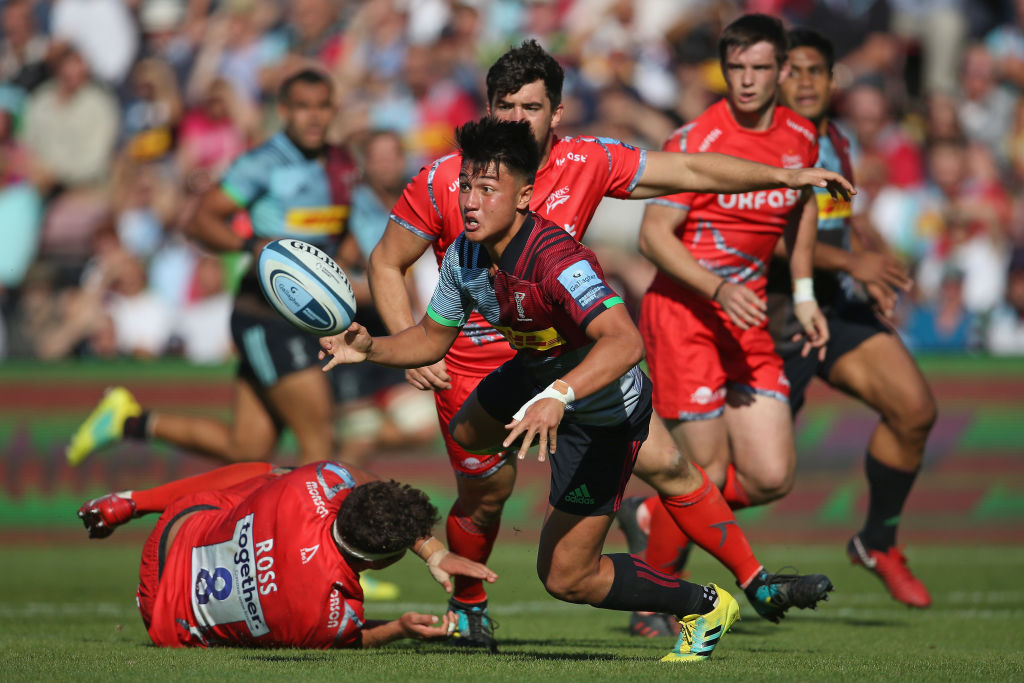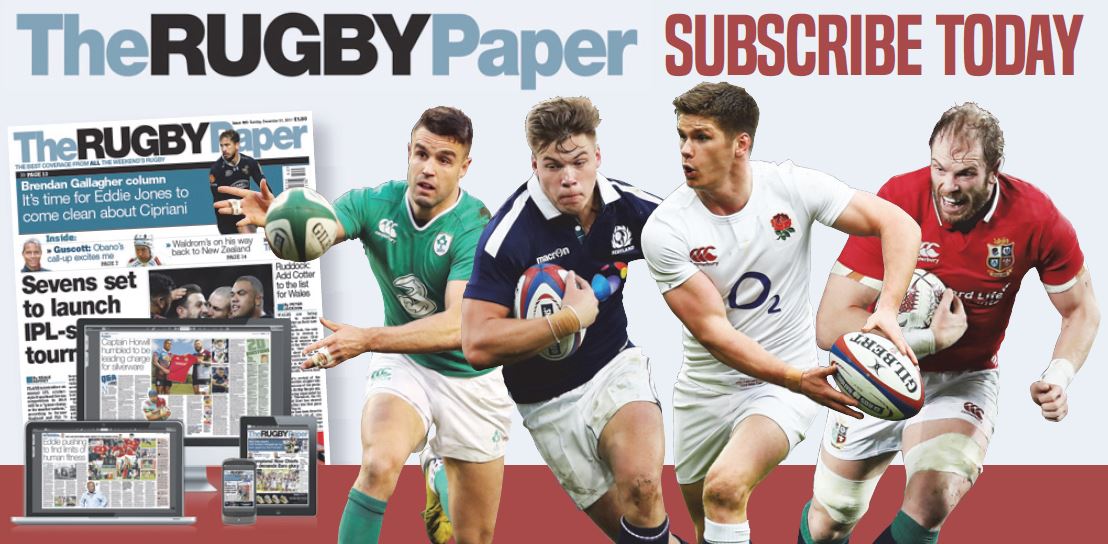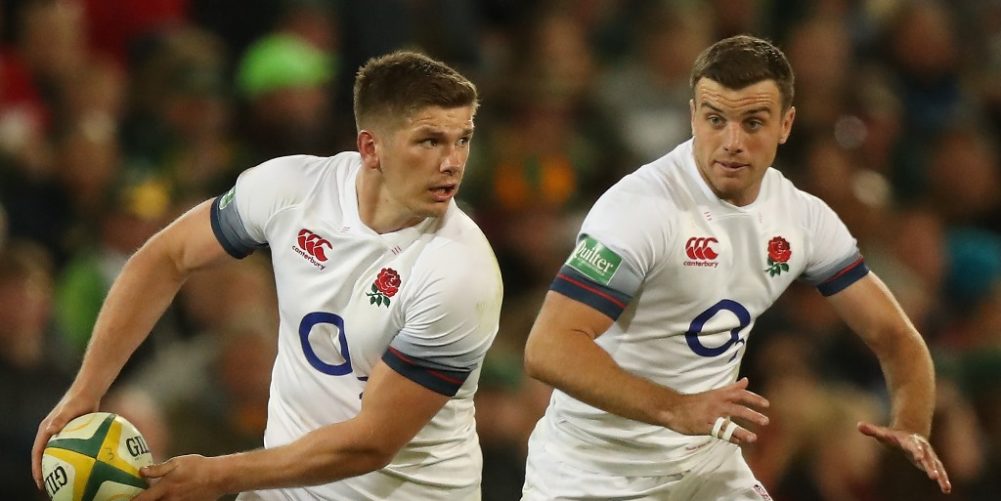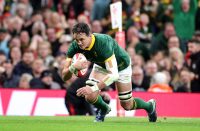By Jeremy Guscott
WHY don’t England have fly-halves who can scythe through the opposition like Beauden Barrett? The first reason is that the All Black 10 is a fantastic rugby player with bags of pace who could play almost anywhere in the backline – and there are not many of those who come around, even in New Zealand.
The second is that Barrett is an X-Factor fly-half in a country that expects its 10s to make a difference. The All Blacks have always had great 10s, with Dan Carter, Carlos Spencer, Andrew Mehrtens and Grant Fox making their mark before him.
Fox, who I faced on the 1993 Lions tour, was different from the others because he rarely made breaks or scored tries. He was more of a strategic passer and kicker because at that time New Zealand were about a great pack and getting the ball to outstanding outside backs like Frank Bunce and John Kirwan.
Then came the start of the era of running All Black fly-halves, with Mehrtens paving the way. He was an exceptional fly-half who is underestimated. He was a creative force and a dangerous runner, and mixed his game, whereas Spencer had a reputation as a great showman but probably ran the ball too much.
Carter carved out a reputation as a New Zealand legend because he was a threat as a passer, runner, kicker and defender, with his attacking skills at a peak against the 2005 Lions.
The game New Zealand play is all-court across the pitch, but what a running fly-half gives you is another attacking dimension because they will always attract two or more defenders.
That is the NZ way, but in England it is a different fly-half culture. The Premiership is about survival whereas Super Rugby is not. The main requirements from a 10 at top English clubs is fundamentally to keep his side going forward by gaining territory and not taking unnecessary risks, and to keep the scoreboard ticking over with high percentage goal-kicking.
Even though over the last few seasons Premiership 10s have been asked to play closer to the gain-line, whether you are talking Owen Farrell at Saracens, Dan Biggar at Northampton, Gareth Steenson at Exeter, Toby Flood at Newcastle, or Rhys Priestland at Bath, overall the league still has a reputation for low-risk fly-halves.
It is generally the same with England. If you go back to my day Rob Andrew was seen as a safe pair of hands, who, even though he rarely made a break, was preferred because he had a higher penalty rate than Stuart Barnes.
How many really attacking fly-halves have England had? Jonny Wilkinson once scored a kick-and-catch try against New Zealand, but he and Barrett are polar opposites. Unlike Wilkinson, if you talk about great goal-kicking 10s Barrett would be nowhere near the top five, but that’s not a disqualification as far as All Black coach Steve Hansen is concern.

Compare that to when Mike Catt played fly-half for Bath. Catt was quick and could have played 10 for England inside Will Greenwood and Mike Tindall, but he was forced into a utility role because Wilkinson was seen as irreplaceable. Who else was going to kick 85 per cent of the goals?
However, England are not the only side to prefer tacticians at fly-half. Take a look at Ireland, with fly-halves like Johnny Sexton hugely influential, and before him Ronan O’Gara the same. Having Sexton at fly-half is almost the same as having Joe Schmidt on the field. He is like a coach, demanding high standards in terms of mastery of detail and quality of execution from the players around him, whether for Leinster or Ireland.
Sexton orchestrates a game which is about being error-free and mounts unbearable pressure on opponents until they crack.
Another big difference is that in Ireland no-one questions that Sexton should play fly-half, whereas in England there is always a debate over whether it should be Farrell, Danny Cipriani or George Ford.
It’s all about your mindset, and recently there have been signs of change at some English clubs. For instance, Saracens have the facility to have Farrell at 10 and Alex Goode coming in from full-back as a second playmaker. It means they are able to really stretch opposition defences and that Farrell is much more prepared to have a go at attacking space than he was previously.
Wasps went for a risk-taker like Cipriani, and over the last two seasons they were rewarded because Jimmy Gopperth, Willie Le Roux, Elliot Daly and Christian Wade could read what he was doing. Their attack was like watching parts of a central nervous system all operating on the same pulse.
Cipriani may not have the same ability to make clean breaks as he did when he first started playing for Wasps, but there are signs already of his attacking flair at Gloucester. However, for it to catch light Cipriani needs at least two others in the Gloucester backline to see the gaps that he does and to react instantly.
The big question for England is whether Ford can do the same at Leicester.
There were times last season when he appeared more inhibited than he did when he first made his breakthrough at Welford Road before joining Bath. In his first stint at Tigers he made plenty of breaks and scored tries himself, but now there are very few.

The closest fly-half to Barrett in the Premiership in terms of attacking DNA is Marcus Smith. The young Harlequins 10 is one of those players who sees the game well ahead of others and has a picture of how it unfolds.
Smith also has good pace, a good kicking game, and is brave in the tackle – but he is an anomaly in England because so few of the players around him can freewheel like he can. In NZ players immediately ‘synch’ with Barrett because they all play the same way, and have so many more ball-players than you find in Europe, especially among the forwards.
The All Blacks have the accuracy and intensity to make their skills count. That’s why they would still win if they had, say, Biggar playing for them instead of Barrett. If you produce quick ball you don’t have to worry about lots of set moves, or have a Barrett. You just need players coming onto the ball at pace and recognising an overlap.
However, if you have a rare talent like Barrett, who is so quick of mind and quick of foot that he can see a glimmer of a gap and say ‘happy days’ in an instant, then you are in the running in a way in which most teams – England included – are not.
The Rugby Paper is on sale all year round! Keep abreast of your club’s activities and the autumn internationals by subscribing: http://bit.ly/TRP-Sub
























